Ten years after its first entry into software instruments, Moog is back with the next generation – a 16-voice wavetable/vector successor with three-axis navigation called Animoog Z.
(Since this is a website, not radio, I kindly remind you that Moog is in the United States. Therefore, in your mind, say “OP-Zed” when talking about Sweden’s Teenage Engineering, and “Animoohhhg Zeeee” when reading this. I can hear you. I can hear when you do it wrong. Do not Moog like a cow. Do not Zed the American company’s fine new synth. We now return to this blog post, already in progress.)
It’s easy to forget what a revelation this was – ten years ago, a lot of synth makers used iOS just for simple companion apps to sell other gear. The 2011 Animoog was released so long ago, it even ran on a BlackBerry Z10. But the app’s release helped demonstrate two things – one, that the Moog company could devote itself to making a digitally native instrument, and two, that the iPad was up to being a serious synthesizer.
Moog, having cut their teeth on making a quite decent Moogerfooger filter app, went all out and created a synth that felt like it belonged on the platform. With its touch plate-style keyboard and fancy X/Y vector graphics for navigating wavetables, it felt a natural fit on the iPad – though it also worked well as a sound module with external control. And it still sounded like a Moog, thanks to samples from the gear.
Animoog Z keeps the basic UI structure in place from the original. So you have touch-plate keys at the bottom with scale/arp/hold, a big jazzy display that visualizes the sound on the left and center, controls on the right, and tabs up top.
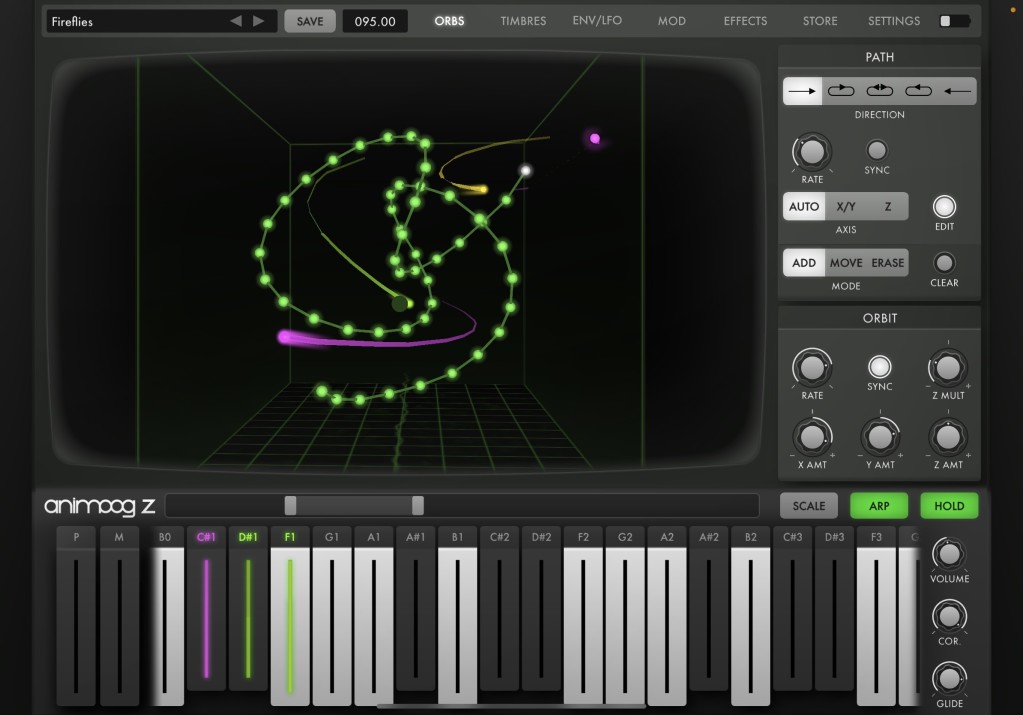
The big breakthrough here, apart from lots of UI refinement that becomes immediately evident, is a three-axis display in place of the two-axis one on the original – hence that “Z.” The creative twist to Animoog was always providing a “path” system for warping your way through wavetables and vectors, letting you visually traverse morphing soundscapes. Moog still calls this their Anisotropic Synth Engine (ASE, because acronyms always make things more serious).
Now it’s three-axis. That means not just X, Y, Z axes for timbres, but also a new orbit module in addition to path to rotate through timbres.
This is 2021, not 2011, though, and so you get other improvements. Animoog Z responds to popular demand and ships as an AUv3 for iOS and macOS – meaning you can seamlessly move from your iPad or iPhone back to your desktop Mac and DAW. They’ve even gone the extra mile and made a VST wrapper with support for AUv2, AUv3, and VST3. I’m sure that will also open them to people clamoring for a Windows version, but for now it remains Mac-only. Mac support includes universal Intel/Apple Silicon compatibility, though.
The other big addition is what they’re calling the Timbre Editor & Recorder – a tool for recording/importing your own waveforms as well as working with vintage and contemporary Moog synths as sources.
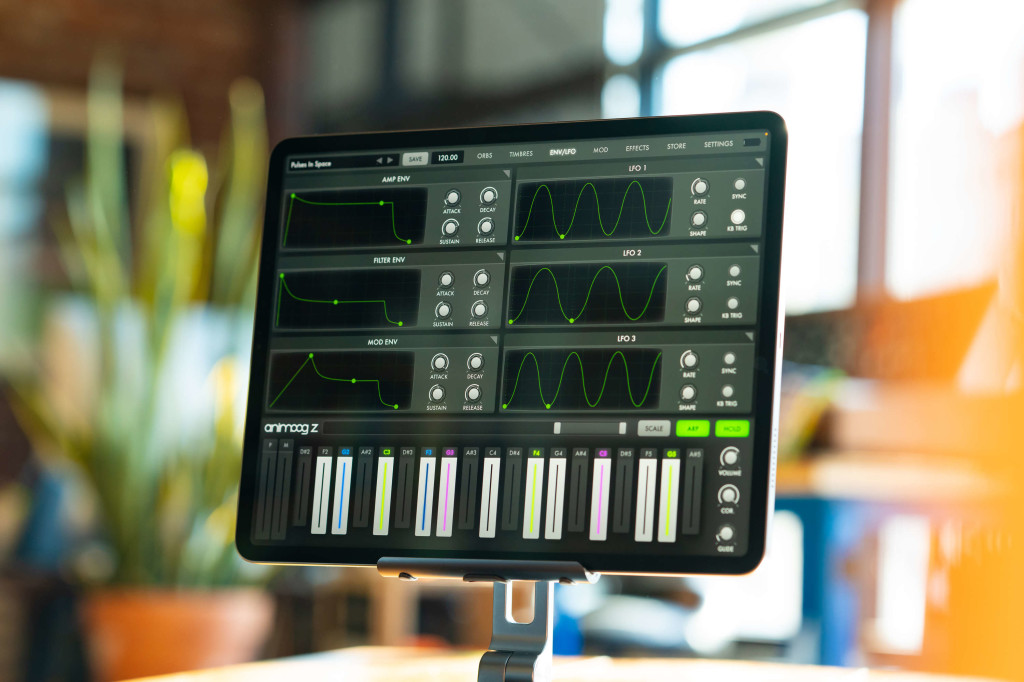
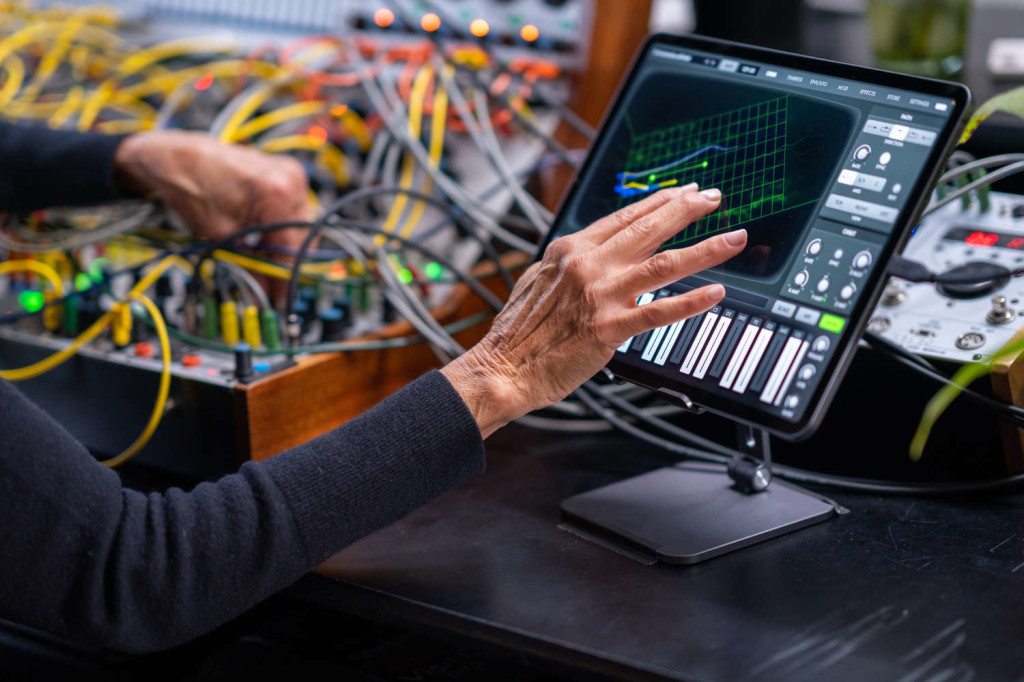
There’s polyphonic pitch shifting, so you can get per-note pitch nuance even inside a chord, including via the iOS touch. Polyphonic modulation is there, too – and matches up with scale/ key mapping and correction and glide.
And there’s MPE support – little surprise, since developer Geert Bevin who was an early MPE advocate joined Moog and led this team. So if the iPad or iPhone isn’t quite precise enough – or you want input back on the Mac – you can connect an MPE controller like the Roger Linn Linnstrument or Haken Continuum and rock out. (The Continuum in particularly is interesting, as I can imagine its internal engine with the addition of the Animoog Z could be a killer combo. You could even just dedicate an iPod touch to the job.)
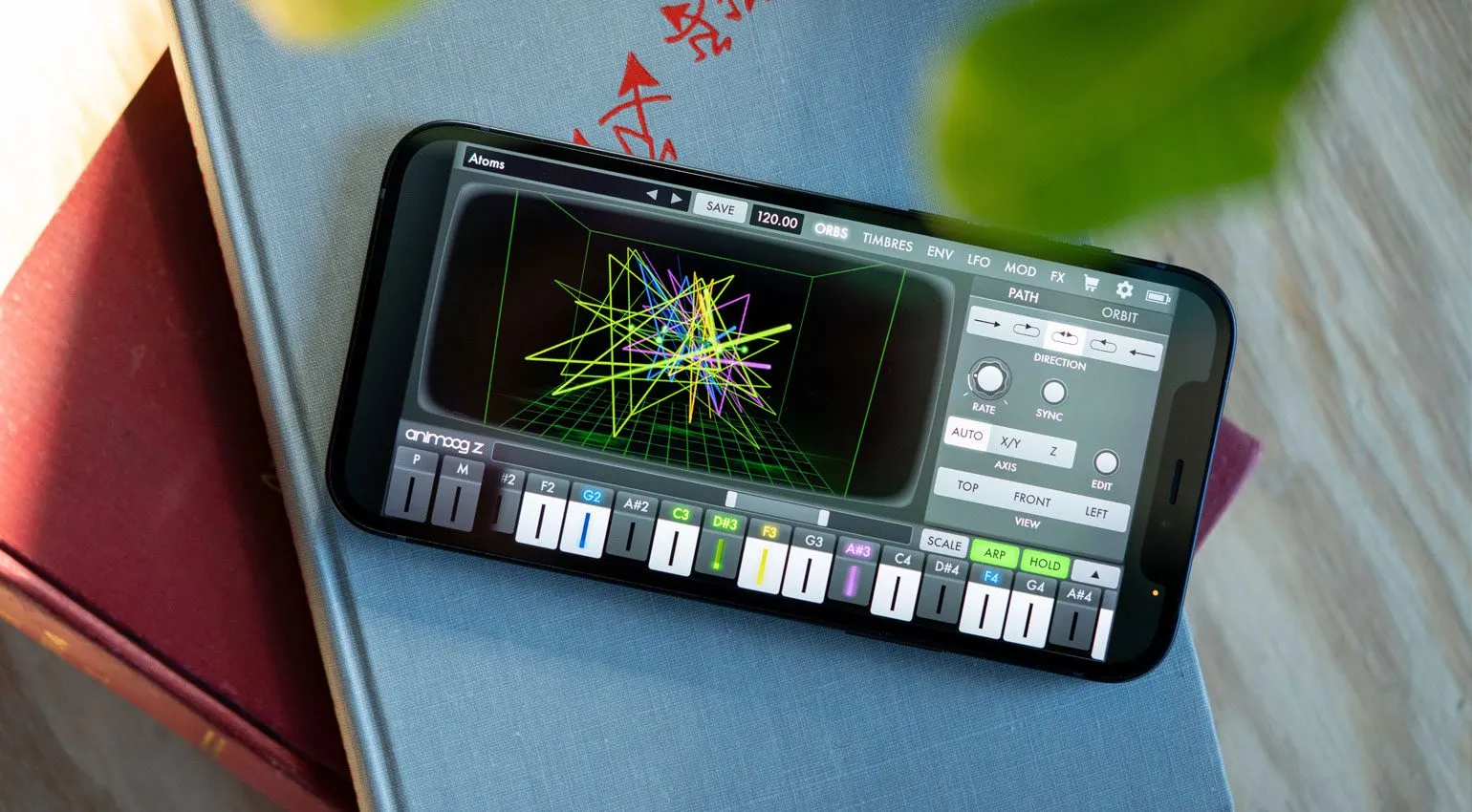
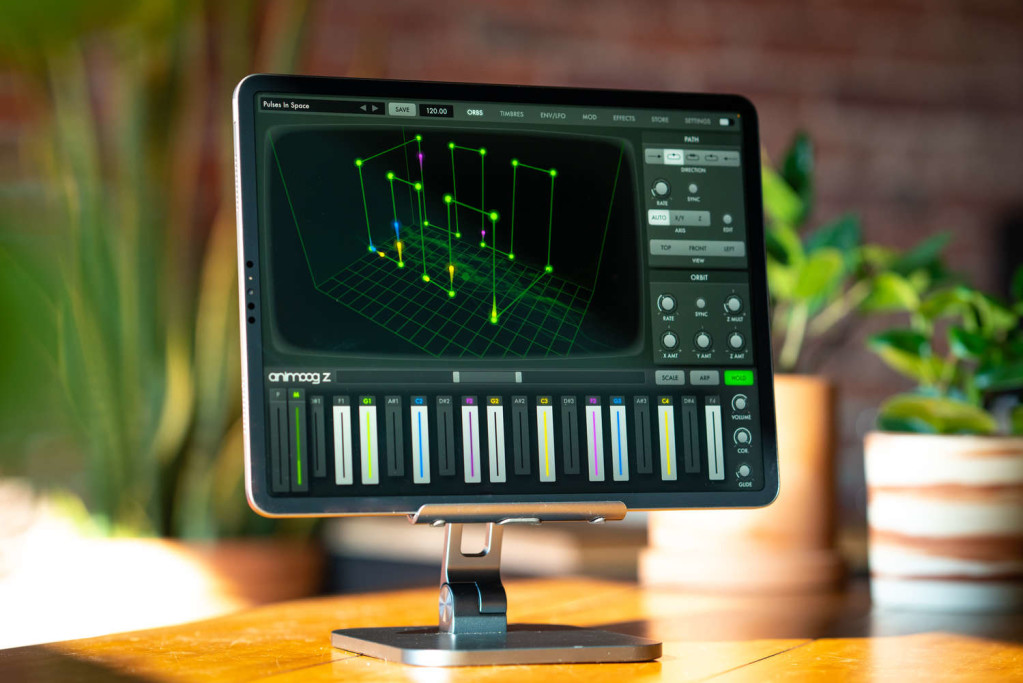
Also included:
- Randomize parameters (including selecting particular modules to randomize)
- Arpeggiator with multiple patterns, octaves, time division, gate, and latch
- Moog filter – high pass / low pass / band pass
- “Thick” module – bit crushing, unison voice detuning, and drive (maybe the most interesting and most easy-to-miss addition here, but it opens up some different sonic character)
- Analog-style delay (almost Moogerfooger lite there)
- Looper / recorder
- Global bpm + tap tempo
- Ableton Link support
- Preset browsing and organization with iCloud Drive support so your sound designs sync across platforms and devices
- Full (typing) keyboard support – obviously essential on Mac in particular, but also interesting even if you connect a QWERTY (QWERTZ, AZERTY, you know…) to your iPad
- Polyphonic pitch and modulation
- MIDI in and out – so this is both a controller and a synth module you can use with your controllers
- Backwards compatible with previous Animoog presets
- Files app compatibility (also for using with your original Animoog stuff)
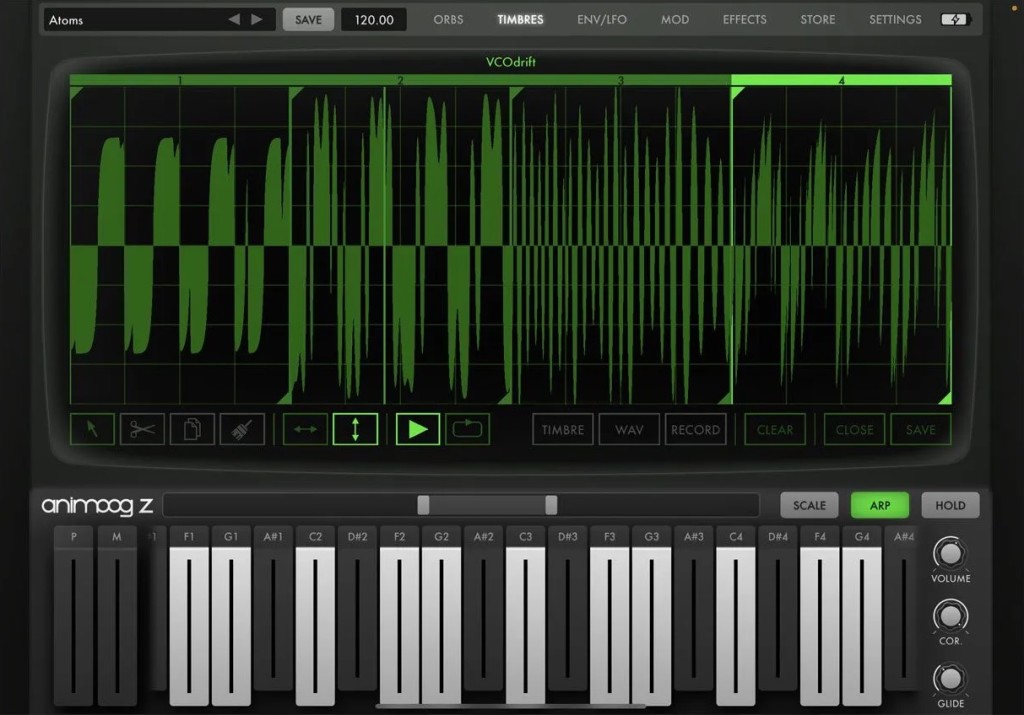
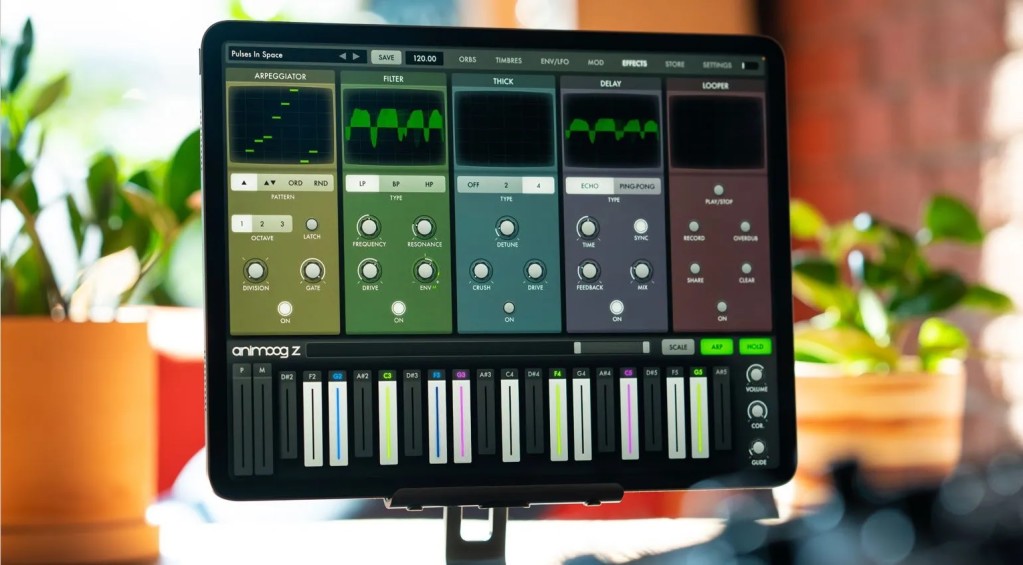
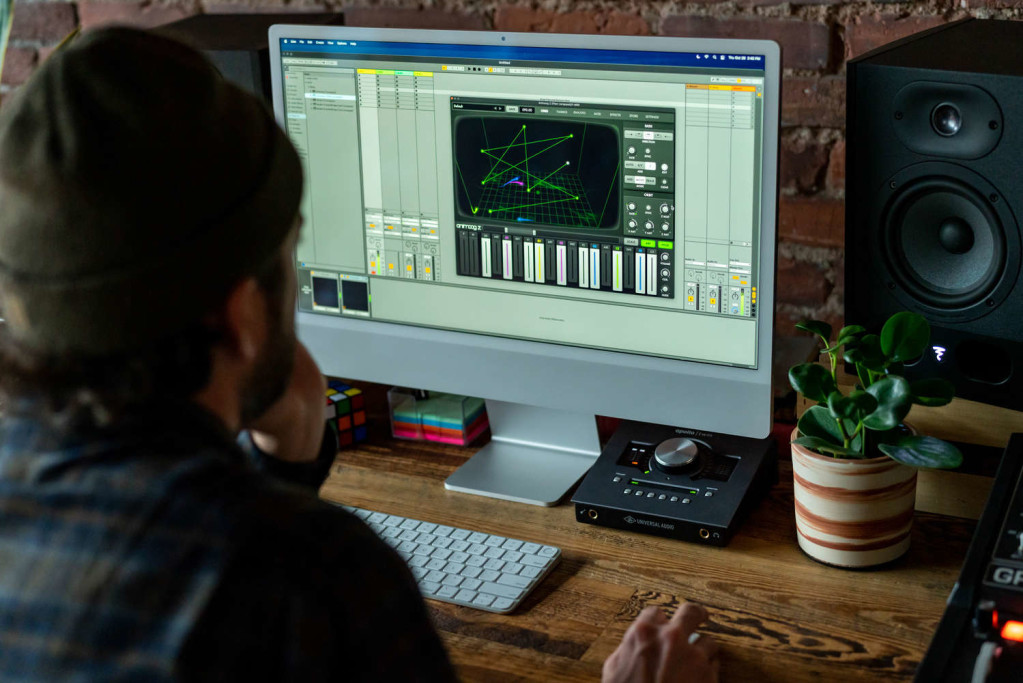
The basic version is free, with the full version unlocked for just US$9.99 – a third of the original’s final launch price. (The free version lets you explore presets; paying unlocks making your own sounds.)
And Suzanne Ciani likes it, a lot. (West Coast? East Coast? All coasts!)
More:
https://www.moogmusic.com/products/animoog-z
(VST wrapper is a separate download, also at that link.)